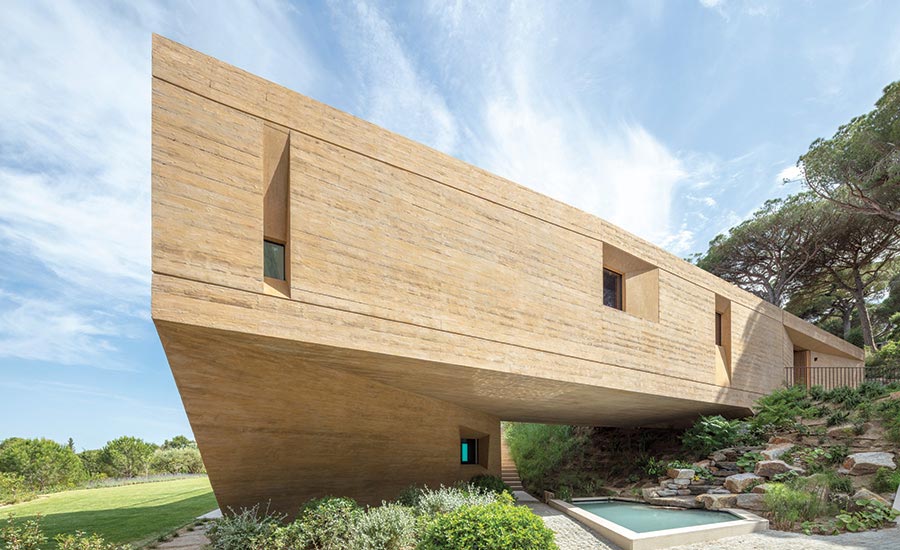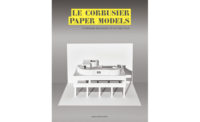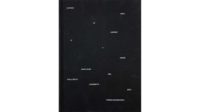The question of what defines “better” hovers over the tongue-in-cheek title of this book, My House Is Better Than Your House, which focuses on a private residence in southern France, the Villa Varoise, designed by Nader Tehrani of NADAAA. The Villa is primarily in conversation with the unbuilt Fahmy House, by Preston Scott Cohen. But, in fact, the conversation is “dedicated” to a series of unbuilt early houses with complex geometries Cohen designed—the Torus House and Wu House included—to which Tehrani’s approach to form-making comes close with this project. At first glance, the exercise may seem insular, yet a deeper reading reveals that the betterment in the title is an effort to engage in a debate about design at a truly disciplinary and tectonic level.

Villa Varoise in southern France, designed by Boston-based NADAAA. Photo © John Horner, click to enlarge.
The structure of the svelte, soft-bound volume is as instructive as the description of the Villa itself. The main text, running down the center of the left-hand pages and flanked by small images relating to that text, transcribes an event at Harvard’s Graduate School of Design on April 16, 2012, the format of which was unconventional: Cohen presented the house designed by Tehrani, and Tehrani presented those by Cohen. Cohen and Tehrani are longstanding colleagues and friends, who for many years have been engaged in a candid dialogue, and a spirit of brutal honesty pervades. “We have a rare relationship,” says Cohen. “He will tell me exactly what is wrong with what I am doing, and I will tell him what I think is wrong with what he is doing.”
With its conversational tone, the exchange captured in the book manages to complement the images and drawings more successfully than is usual in a conventional monograph. The dialogue goes beyond a comparison of the houses and leads to discussions of the typology of the house itself. By doing so, it transcends the conceit of dueling dwellings, opening up a larger discourse on the practice of architecture. But it’s a fun read—both light and serious.
Included in the book is an essay by Robert Levit, associate dean of architecture at the University of Toronto. He writes specifically about Tehrani’s practice, both past and present, and “what [Tehrani] has described as the relationship between figuration and configuration.” Levit explains this as the difference between building parts (the material components that make up the structure) and the overall shape of the building. In the case of the Villa Varoise, the distinction has been blurred due to the nature of cast-in-place board-formed concrete, creating a house more reductive, singular, and pure. This, as Levit and Cohen both note, is a slight deviation from Tehrani’s other work, in which the modularity and manipulation of the building material is expressed in the plastic form-making of the building itself.
The art of this book is that it can be enjoyed on several levels. It is a deep dive into the design process and the meticulous execution of one single house, and its surrounding landscape, taken from initial concept and site strategies through drawings, diagrams, models, and construction details. (Photos of the built structure, completed last year, occupy the book’s right-hand pages, opposite the text.) But the book is also a manifesto—a reminder to all of us that as architects it is “our responsibility to change the status quo . . . to motivate the discipline, and produce not novelty, but innovation.” If you manage that, then the results of the design process just may be “better.”






Post a comment to this article
Report Abusive Comment